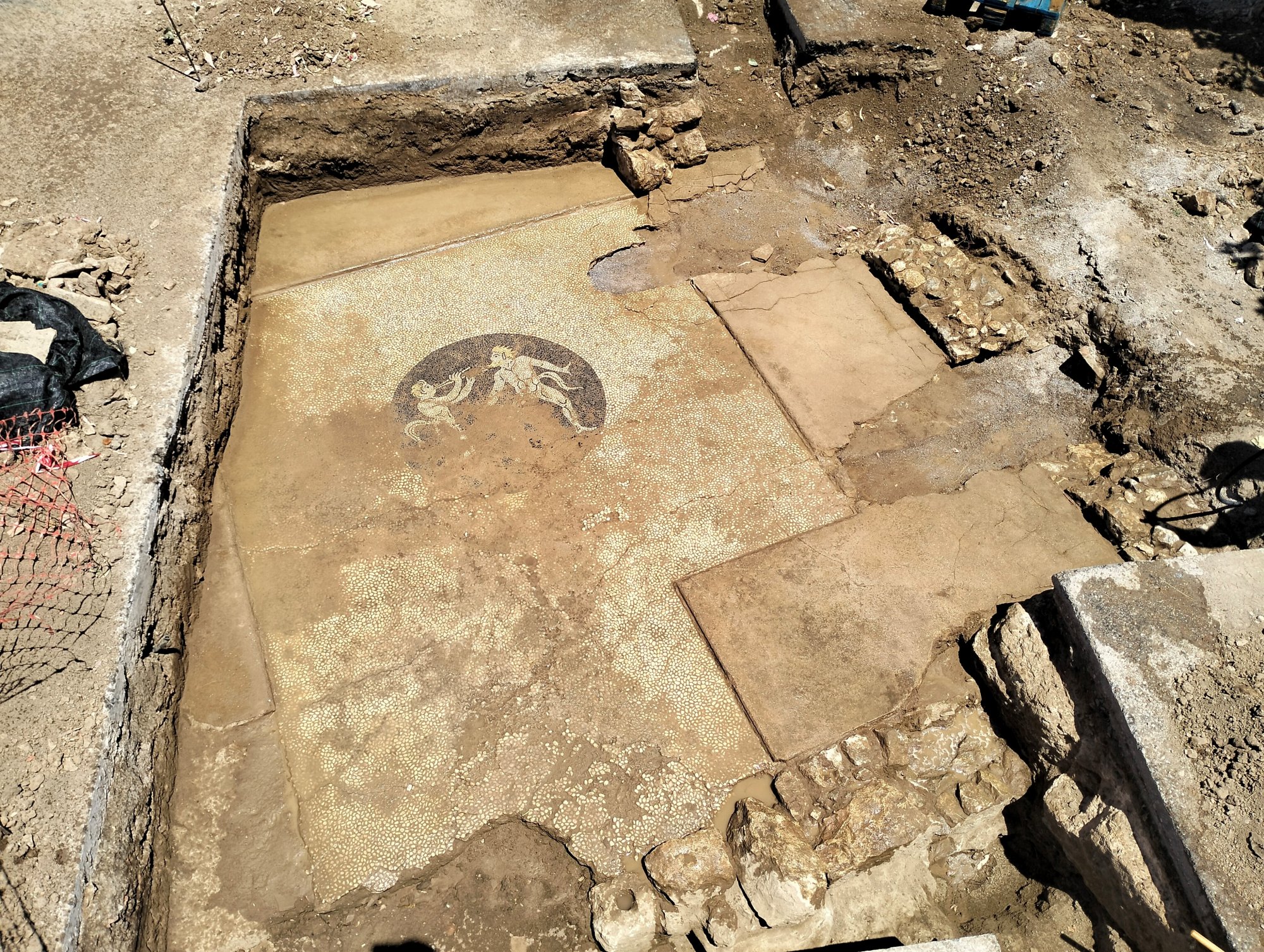A major archeological discovery was made in Eretria, a town along the western coast of large Euboea (Evia) Island facing the Greek mainland, during the installation of an urban water pipeline.
Located in the center of the noted ancient city near the sacred temenos of Apollo Daphnephoros (wreath-covered head), the “Panathenaic Amphorae Quarter,” and the “House of the Mosaics”, a section of a late Classical period house was unearthed, the highlight of which is its pebble mosaic floor.
After initial evaluations, it is estimated that the residence dates to the mid-4th century BC, aligning with the emergence of luxurious private residences in ancient Eretria. Previous excavations in this area have revealed other dwellings of the same period, adorned with similar intricate pebble mosaic floors.
The excavated room is nearly square, measuring 3.50m by 3.55m, and is defined by walls on its southern and eastern sides.
The well-preserved mosaic floor is made from small, white pebbles and features a central medallion, about 1.13m in diameter, depicting two satyrs, rendered in white, black, red, and yellow pebbles. The younger-looking figure of the two is depicted playing a double flute and the older, bearded figure seems to be dancing.
An elevated plaster floor along the northern, eastern, and western edges of the room likely served as a base for beds or couches, a common feature in similar period houses in the area. This suggests that the room was used for banquets and social gatherings, further illustrated by the satyrs’ playful nature.
After its abandonment in the early Christian centuries (circa 5th-6th century AD), the site seems to have been repurposed as a cemetery, evidenced by the discovery of several graves within and around the room.
The mosaic is currently protected through temporary backfilling, with plans for future conservation and integration into the broader study of Eretria’s archaeological sites. The Ephorate of Antiquities of Euboea has taken steps to ensure its preservation and future display.




